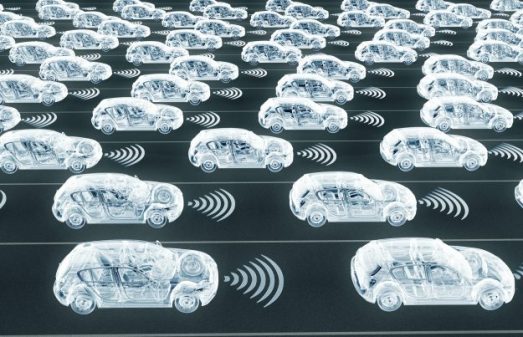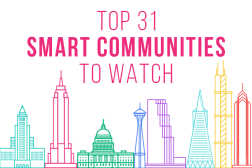
Chatbots
State of North Carolina
Chatbots are used by companies like Microsoft, Facebook and Overstock to automate rote tasks and free up their human employeesso they can focus on more thoughtful work.
North Carolina took the lead on government chatbot use when the state’s Innovation Center began testing their use internally last year. The state is exploring whether chatbots can replace internal IT support for simple requests like password resets. If the program isdeemed successful, the state plans to expand it.
The development of chatbots and otherautomated communicationis beginning to keep pace with technology’s general advance. Thousands of news stories each year like sports recaps and earthquake reports arewritten by bots. As more sophisticated artificial intelligence tools are commercialized, a growing number of repetitivetasks are expected to become automated, both in government and out.

Crowdsourced Air Quality Monitoring
Pittsburgh, Pennsylvania
Mobile apps arent new and neither are digital maps. But when you combine these with crowdsourced air quality reviews and sensor data, effects can be groundbreaking. Last September, researchers at Carnegie Mellon University’s CREATE Lab launched a crowdsourced app called Smell PGH to help Pittsburgh residents track pollution in their neighborhoods.
The local tool comes at a time when Pittsburgh’s airpollution is topping the national charts. The American Lung Association graded thearea with an F for its overall pollution levels and ranked it the eighth-worst region nationally for annual particulate levels. CREATE Lab Project director Beatrice Dias noted that app is both an alert system, as it reports air data from the Environmental Protection Agency, and acts as a two-way communications channel between residents and the Allegheny County Health Department, which follows up on the crowdsourced smell reports.
The interesting part of the air share or smell share, so to speak in any region is that it doesnt matter where the pollution is starting. It can travel across the region with prevailing winds, Dias said. Were trying to teach people that pollution doesnt have to be something you see necessarily, but you can still experience it.”
Smell PGH is just one of many environmental projects in government today that draw on crowdsourced data. The City of Chicago is experimenting with using Twitter to prioritize restaurant inspections and Louisville, Kentucky’s AIR Louisville program is creating new troves of data generated by connected asthma inhalers.

Cybersecurity for IoT
San Diego, California
State and local governments talk a lot about securing their environments in an Internet of Things-dominated world, but in San Diego, IoT cybersecurity is taking a step further.
Chief Information Security Officer Gary Hayslip said the city is experimenting with intelligent infrastructure projects that are forcing staffers to rethink how agencies handle cybersecurity in an IoT world. The city partnered with Tenable Network Security to give IT staffers new capabilities to monitor the cyber risk of all of the citys connected devices.
Through real-time data, San Diego can easily discern the difference between a connected HVAC system or streetlight versus an unidentified malicious device attached to a city network.
The increased vision over its systems has enabled the city to reduce the number of infected devices by about 35 percent, officials reported, and ultimately save the city money, negative press and aggravation.

Autonomous Vehicles
State of Michigan
Many states have endorsed self-driving vehicle policies permitting test facilities and pilots, but none have gone as far as Michigan. In December, Gov. Rick Snyder approved a series of bills to legalize the technology for consumers on public roads.
Four bills set a framework for testing, usage and purchase of self-driving vehicles. The law permits ride-hailing companies to use the vehicles and allowsfornext-gen vehicles to come to consumers without steering wheels or gas and brake pedals. Automakers strongly backed the bills and Snyder said the intent is make Michigan the leading state for AVadvancement.
We are becoming the mobility industry, shaped around technology that makes us more aware and safer as were driving, Snyder said. By recognizing that and aligning our states policies as new technology is developed, we will continue as the leader the rest of the world sees as its biggest competition.
Other states may be tempted to follow suit as the auto industry prepares its new AV catalog. Volkswagen plans to produce 30 new electric or hybrid vehicle models by 2025, some of which will be autonomous. Tesla, too, is installing inactive autonomous software in all its cars to be unlocked pending regulatory approval. Most top automakers have released autonomous prototypes by 2017, and with new AV pilot projects launching in cities around the nation, AV is just around the corner.





